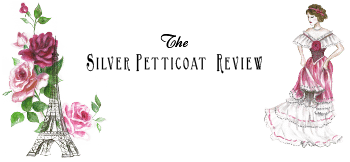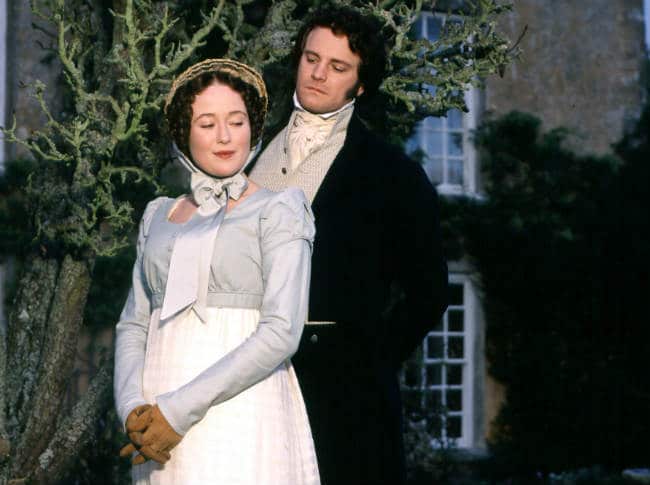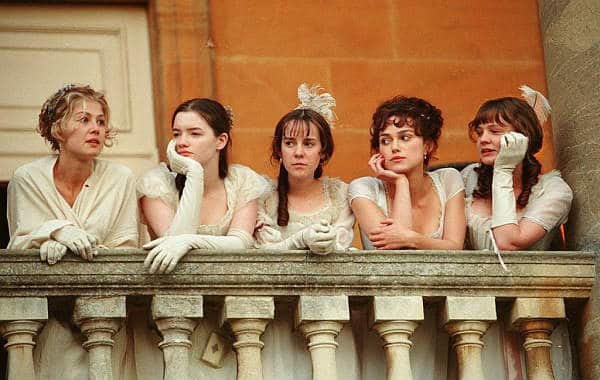This is the first article in a new series, looking at the influence of fairy tales on some of our favourite classic novels. And it begins with Jane Austen’s beloved Pride and Prejudice (1813).
Darcy and the Beast
Have you ever stopped to think that Pride and Prejudice has exactly the same plot structure as Beauty and the Beast? Let’s examine the evidence. Here’s a breakdown of the basic plot, as it relates to both stories:
- Two people meet in unfortunate circumstances. They don’t like each other.
- He starts to like/need her, but she still doesn’t like him.
- He makes a move on her and she refuses.
- He lets her go/does something genuinely loving for her.
- She realises she loves him when it seems too late.
- Love affects a transformation.
Let’s now relate that to Beauty and the Beast:
- Beauty is effectively sold to the Beast. She definitely dislikes him. It’s hard to say how he feels, but at the beginning of the story, he mostly seems angry.
- This stage probably occurs more often in modern retellings of the story, which lets us see the Beast’s feelings. However, even in older versions, we often see the Beast giving Beauty many gifts to make her feel comfortable. And he knows he needs her to break the curse.
- The Beast asks Beauty to marry him. In many older versions, this happens every night. Modern versions may hold back the proposal for greater dramatic tension.
- He lets her go back to her sick father, even though he knows her absence might kill him.
- Beauty finds the Beast dying and tells him she loves him and will marry him.
- The Beast becomes a Prince.
Now let’s look at that same structure as it relates to Pride and Prejudice:
- Elizabeth and Darcy’s first meeting at the Netherfield Ball. Neither are impressed with the other.
- His feelings for her subtly change. He comments on her “fine eyes” and love of reading. But he still looks down on her social and familial connections.
- The famous proposal: “You must allow me to tell you how ardently I admire and love you.” Which is rebuffed with: “You could not have made me the offer of your hand in any possible way that would have tempted me to accept it.”
- The Lydia/Wickham crisis. Elizabeth rushes away from Pemberley to comfort her family. Darcy seeks out Wickham behind the scenes and arranges his marriage to Lydia.
- The visit of Lady Catherine de Bourgh. By expressly forbidding Elizabeth to marry Darcy, she makes Elizabeth feel more inclined towards him. When he proposes, she accepts.
- Darcy has changed completely in Elizabeth’s eyes. In defending him to her father, she says: “I do, I do like him… I love him…. You do not know what he really is.”
There are other shades of Beauty and the Beast in Pride and Prejudice as well. For example, the contract by which Beauty’s father sells her to the Beast. This is all about arranged marriage. A daughter can be sold to a husband she has never met and expected to share her life – and her bed – with him. This is a scary business! No wonder the husband appears to be a Beast.
Pride and Prejudice, too, is all about the marriage market. That is evident from the first sentence: “It is a truth universally acknowledged, that a single man in possession of a large fortune, must be in want of a wife.” We are told that the business of Mrs Bennet’s life is to get her daughters married. The economic realities behind this were brought out well in the 2005 film, starring Keira Knightley and Matthew Macfadyen. Getting a husband is the only way for a woman to be financially secure, get out from under her parent’s feet and run her own home. This can mean settling for a husband you do not love or even respect. Charlotte Collins (previously Lucas) knows the truth of this, when she says, “Happiness in marriage is entirely a matter of chance,” and accepts Mr Collins. In the film, she defies Lizzy to judge her for this choice. Lydia, on the other hand, is carried away by passion into a foolish marriage, which “soon sunk into indifference.” Happy the woman (like Lizzy) who can find financial security, true love AND mutual respect!
Next time, we will look at the variety of fairy tales to be found in Jane Eyre.
What do you think? Does Pride and Prejudice resemble Beauty and the Beast? And can you relate this plot structure to any other romance stories?
All quotations are taken from Pride and Prejudice by Jane Austen (Edition: London: Tiger Books/ Harper Collins, 1991)




Two of my favorites. You know I’ve never thought about the connection between the two, but there are quite a few similarities in the plot structure. I’ve loved Beauty and the Beast since I was a little girl. Makes sense that I would come to love Pride and Prejudice as well. 😀
Great comparison! It was always easy for me to see the Beauty and the Beast connection to Jane Eyre, but I never thought much about Pride and Prejudice. But yeah, the structure is very similar! Elizabeth really is a “Beauty” like character as well in many ways.